Youth Coaches: Destroy Your Playbook and Do This Instead
This could be one of the biggest mistakes in youth basketball.
In fact, if you're making this same mistake, you could be crippling the development of your team.
Unfortunately, I learned the hard way and made this same mistake.
It's running set plays and patterned offenses instead of teaching universal skills that apply to all offenses.
Now, so we get on the same page, let's explain exactly what I mean by each term.
What is a set play?
A set play is a strategically planned and choreographed sequence of movements to get open shots and score points. Generally speaking, the sequence is ran through just one time.
Here is an example:
Instructions:
|
Step 1: Four players start on the perimeter with player 1 in possession of the ball. Player 5, who the play is run for, is positioned on the strong side low-block. Player 1 passes the ball to player 2 and cuts to opposite corner. |
|
|
Step 2: After player 1 cuts to opposite corner, player 5 goes to set a back screen for player 4, who cuts to the ball-side block. Player 5 then goes to set a ball-screen for player 2. |
|
|
Step 3: Player 5 sets a ball screen for player 2 and then rolls to the basket. As player 5 is setting a ball-screen for player 2, player 4 cuts out to the near corner. Player 2 dribbles towards the top of the key. |
|
|
Step 4: Player 2 passes the ball to player 4 in the corner. In the meanwhile, player 5 is working to keep his defender under control (i.e. behind him). |
|
|
Step 5: |
|
FREE BONUS PDF
Youth Practice Plans & Bonus Drills
What is a patterned offense?
A patterned offense runs a sequence that turns over and over and over without the need to stop or reset.
An example would be the flex offense.
Basic Flex Motion - Guard to Guard Passes
When a guard to guard pass is made, the player on the low block sets a flex screen for the player in the corner which is followed by a down screen by the passer for the player setting the flex screen.
Any time this guard to guard pass is made, this action occurs. You could run the flex offense simply by passing guard to guard continuously. You will see this in this action over the next few diagrams.
|
1 passes to 2. 5 sets a flex screen for 4. 4 cuts across the lane looking for the pass from 2. This is the first option off of the flex. If 4 does not receive the pass, 4 finishes the cut at the low block. After the screen is set, 5 opens up to the ball. This is the second flex offense option. |
|
|
1 sets a down screen for 5. |
|
|
1 clears to the corner. 2 passes to 5. 4 sets a flex screen for 3. |
|
|
2 sets a down screen for 4. |
|
|
2 clears to the corner. And the flex pattern continues. |
|
What are universal offensive concepts?
Universal offensive concepts are offensive skills that apply to any offense or set play.
It doesn't matter what the coach teaches, you have developed skills that will make you a better player in their system.
This includes things like...
- Getting open using cuts - V-cut, L-cut, basket cut, backdoor cut, post cut, flare cut, and more.
- Utilizing screens - Down screens, ball screens, back screens, flare screens, and more.
- Spacing
- Counter movements to dribble penetration - Curl up, space out, cut backdoor, and so on.
As a high school coach, I would be extremely happy if you brought me a group of kids that simply knew how to keep proper spacing, basket cut (give and go), cut backdoor when overplayed, and v-cut to get open.
Then you spend the rest of practice developing 1v1 offensive skills and some man to man defense.
As all great coaches have said, it's better to teach kids how to play rather than how to run a play.
And that's a big problem I see at the youth level. Well-intentioned coaches will teach plays and patterned offenses, but they spend little time teaching universal offensive skills; the same skills that help them progress to the next level of basketball.
Teaching Offensive Concepts Within Plays and Patterned Offenses?
I've often heard the response... "But Joe, I teach my team plays (or patterned offenses) and I teach them universal offensive concepts."
Is this okay?
Yes and no.
First, here is an example. This is a piece of the flex offense.
In the flex offense, when a player sets a screen and the player fills the guard spot.

In the diagram to the right, 1 sets a screen for 5.
However, let's pretend that the defender guarding 5 is denying the pass.
This could cause the offense to stop and give the defense an advantage.
If you've ever taught plays and patterned offenses at the youth level, you know this can happen quite often.
So a coach who teaches universal concepts would simply have 5 cut backdoor or screen again for 1.
This is better than what most youth coaches do.
However, there is a big reason I'm still not a proponent of this.
Running set plays and patterned offenses wastes tons of practice time
At the youth level, I've ran set plays. I've ran patterned offenses.
I know how much practice time it takes to effectively run them during games.
I once saw a coach who ran 30 set plays with his middle school team. Each week, they had a practice day dedicated only to running plays.
90 minutes every week wasted.
Do that over a 16-week season. That's 1,440 minutes!
Do that over 5 seasons... that's 7,200 minutes!
Imagine if you take that time and you practiced 1v1 offensive skills and universal offensive concepts.
You would make a ton of progress. And the players would be much better.
And they would have a way better chance of making their high school teams. And the few fortunate ones might even play at the college level.
I was fortunate to coach a 7th grade team that had 4 future college players on it. And it wasn't even an elite or all star team.
With a professional career, would you rather make less money or more money in the future?
Imagine that you are currently working and you had two choices in your profession.
Option 1 - Each week, you work 20 hours on tasks that develop your professional skills. These skills directly increase your future salary.
Then you spend another 20 hours each week on tasks that don't increase your skills and won't increase your future salary.
Option 2 - Each week, you work 40 hours on tasks that develop professional skills. These skills directly increase your future salary.
The answer is so evident that you already know the answer!
Now think back to what we just talked about with set plays.
You're asking players to choose Option 1. You're asking them to waste their time working on things that won't make them better basketball players for the future!
Also since I know there are some people that are going to agree to disagree...
Now, I wholeheartedly believe you should teach universal offensive concepts in a progressive manner within a motion offense structure.
However, if you still disagree with me. Make sure you do this...
If you're running a patterned offense with youth teams, use the flex offense and teach universal concepts. It puts players in all positions on the floor. It also teaches them how to utilize multiple cuts and screens.
Don Kelbick's Dynamic Flex Offense shows you how to do that.
Absolutely do not run an offense that puts big players underneath the basket and guards outside. You want them to learn all positions and skills.
I've seen too many situations where a 6'1 twelve year old is a 6'1 eighteen year old. And because they were put under the basket, they never developed any guard skills.
I've seen other situations where a 5'5 twelve year old only practiced guard skills but grew to be a 6'8 player. Imagine a 6'8 player with guard and post skills!
Resource For Motion Offense and Universal Offensive Concepts:
Don Kelbick's Motion Offense -- DVD 2-Pack & Supplemental eBook
Tim Schuring's Complete Offensive System -- Transition, Secondary Break, Motion, Press Breaker
FREE BONUS PDF
Youth Practice Plans & Bonus Drills
What do you think? Let us know by leaving your comments, suggestions, and questions...
|
|||||||||||||||||||||||||||

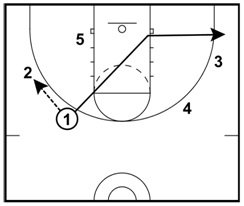
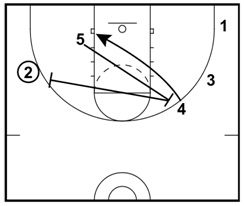
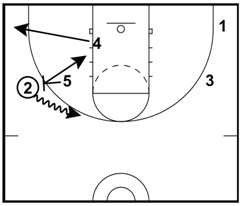
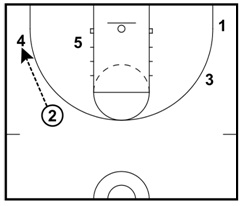
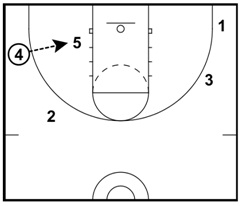
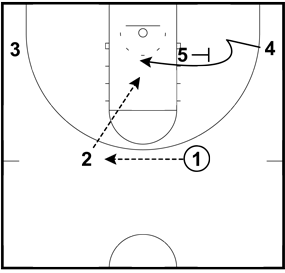
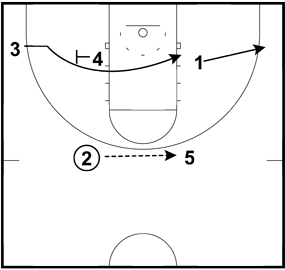
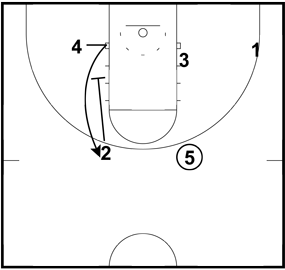
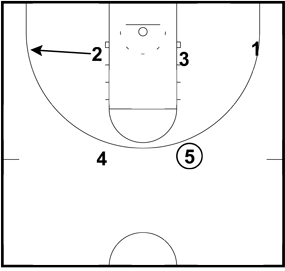


 Facebook (145k Followers)
Facebook (145k Followers) YouTube (152k Subscribers)
YouTube (152k Subscribers) Twitter (33k Followers)
Twitter (33k Followers) Q&A Forum
Q&A Forum Podcasts
Podcasts